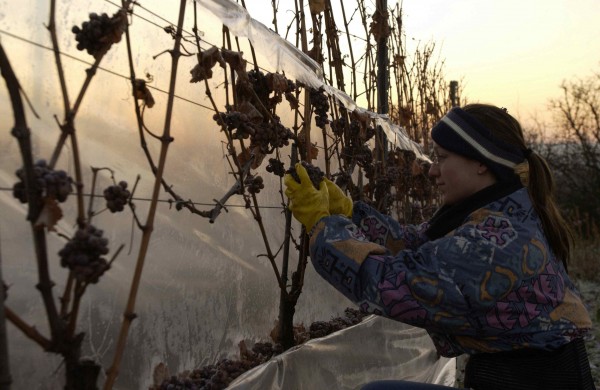Although ice wine has the same requirements regarding the must weight like a Beerenauslese, the two have significant differences. While grapes for Beerenauslesen should preferably be infested by botrytis, and although ice wine is not required to be botrytis free, it is undesired.

Ice wine is not only high in sugar, but also in fruit, extract and acid, as these are bound to sugar at temperatures below -7 ° C and thus in the must of pressing the frozen grapes. The harvest of the frozen grapes usually takes place at dawn. The frozen grapes must not thaw under no circumstances. They are pressed without reducing them to small pieces and further vinification is usually done reductively. In most cases, the reading takes place manually, but in a few wine regions harvesting can ne done by machine.
For the first time, wine from frozen grapes has been produced in Bingen, when a early frost in late autumn at the beginning of the 19th century, which hit grapes of a whole year, which hung still on the vine for later maturity . For the winemaker even today there is a risk of total loss, if grapes remain in the vineyard as long as the ice wine does. Even in case of success, only 5-10% of the original grapes end up in the bottle, which means only a yield of about 300 – 500 liters of ice wine per hectare. In addition, not completely healthy berries have to be selectively cut out again and again. All of this is reflected in the price.
Ice wine tastes fruity, is sweet with animating acidity, has a light alcohol content, usually 7 to 10 % by volume, but due to the efforts its high price. At 10 – 12 ° C serving temperature, it not only matches well with sweet foods but also excellently with Roquefort.
Serving temperature 10 ° – 12 ° C